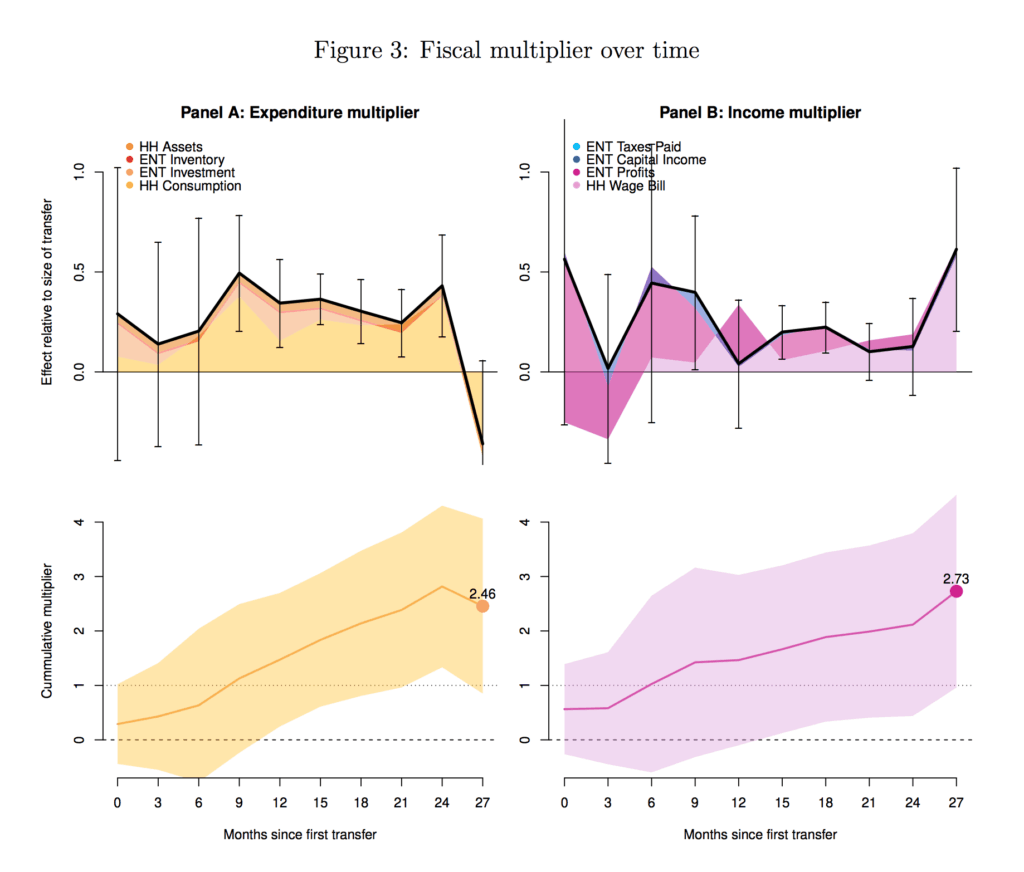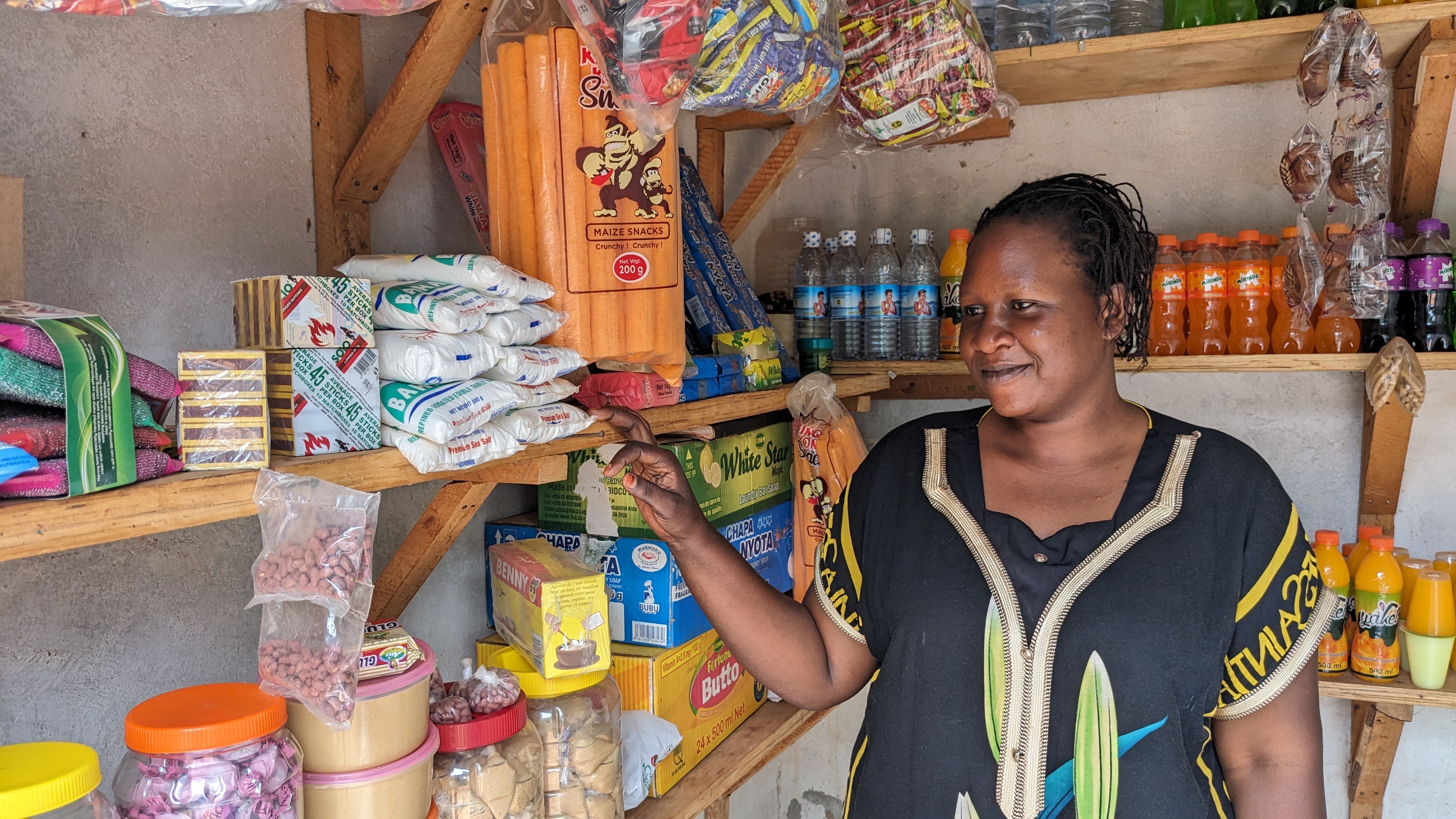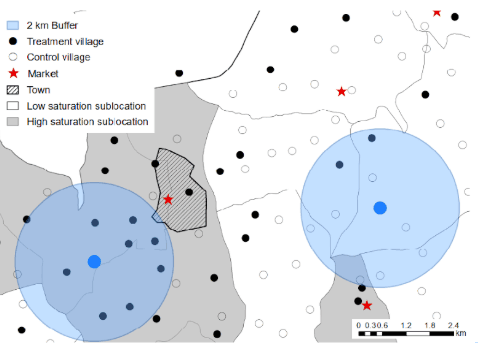EDIT: Researchers published an updated version of this study in November 2022
Our latest study
In 2014, GiveDirectly partnered with academic researchers to launch our largest study ever in Kenya. The ultimate goal: find out how cash transfers affect local economies, including nearby non-recipients, enterprises, and markets. Now, in 2019, the results of this research have been released.
We delivered $1,000 to each of 10,500 households across 328 villages in Siaya, Kenya, ultimately distributing as much as 15% of local GDP one year. In parallel, 5 economists from Berkeley, Princeton, and UCSD (including GiveDirectly co-founder Paul Niehaus) led numerous surveys of recipients, non-recipients, and local business owners to understand the broader, macroeconomic effects of large infusions of cash across a total of 653 study villages.
You can read the full paper here.
Key takeaways

The authors’ abstract, which we’ve shared below, sums up the results well:
How large economic stimuli generate individual and aggregate responses is a central question in economics, but has not been studied experimentally. We provided one-time cash transfers of about USD 1000 to over 10,500 poor households across 653 randomized villages in rural Kenya. The implied fiscal shock was 15 percent of local GDP. We find large impacts on consumption and assets for recipients. Importantly, we document large positive spillovers on non-recipient households and firms, and minimal price inflation. We estimate a local fiscal multiplier of 2.5. We interpret welfare implications through the lens of a simple household optimization framework.
Stepping back, this study is an exciting example and extension of the “experimental approach to alleviating global poverty” recognized by this year’s Nobel Prize in Economics. Randomized controlled trials often focus on programs’ individual direct effects, but this study varied cash transfer intensity by whole groups of villages and constructed estimates of broader macroeconomic effects.
For example, to understand the effects on inflation, researchers conducted monthly surveys for 2.5 years across 61 markets and 72 products. And researchers surveyed enterprises and households (both recipients and non-recipients) to estimate the “multiplier” effect, finding that $1 of cash delivered generated $2.60 in additional spending or income for the local economy.
As with most studies, not every finding was positive. Health and female empowerment measures did not change significantly for recipients or non-recipients, and while there were large economic gains for recipients (targeted as the poorest), gains for non-recipients were so substantial that the gap between the poorest and least-poor within villages widened slightly.

The usual caveats
The study is among the first to use randomized control trial methods to measure the macroeconomic impacts of cash transfers, including the total effects across recipients and non-recipients. But it’s also just one study. There are well over 150 high-quality studies on the direct effects of cash transfers. And while the literature on inflation, economic multipliers, and spillovers is much smaller, that wider literature is still important to consider in interpreting these results and especially in extrapolating to new contexts.
What we’re thinking about
We’re still mulling a number of questions about the implications of these results for GiveDirectly’s work and the broader evidence on cash:
- How should these results inform GiveDirectly’s regional and village selection processes?
- Given the magnitude of positive spillovers for nearby non-recipients, are “control” households or villages in other GiveDirectly studies less insulated from the cash “treatment” than we’d previously thought?
- How should these results (i.e., moderately smaller direct effects for recipients than some previous GD studies, but new estimates of large indirect effects for non-recipients) inform how we think about GiveDirectly’s typical or average impact for this type of program?
We’re keen to hear what others make of the findings and looking forward to more discussion, experimentation, and learning.
Update: This research has been featured in Washington Post, Economist, NPR, Vox, World Economic Forum, and a World Bank blog by PI Michael Walker (taxation findings).
The GiveDirectly program evaluated by General Equilibrium study was made possible through the generous support of donors including the The Pershing Square Foundation.



